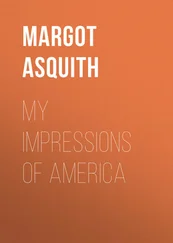Some racial profiling is more racially and religiously based, again with the backdrop of Asian Americans as untrustworthy and possible threats. “Operation meth merchant” is the US Drug Enforcement Agency’s name given to its crackdown on Indian American-run convenience stores in northwest Georgia accused of selling common household items that, when mixed together, can help create methamphetamine (meth). While most stores in that area are white-owned, those targeted were run by Indian immigrants, often with limited English skills. 9Deportations resulted from this operation.
More wide-ranging government profiling of South Asian and Arab Americans has risen since 9/11 from its already high rate, with particular emphasis on men from predominantly Muslim countries. 10Under the “special registration program,” male residents in the United States who immigrated from one of twenty-five nations, practically all of which were Middle East and South Asian countries (including Bangladesh and Pakistan), were asked to register with the federal government. A portion of those who did were subsequently deported for having an undocumented status. If one did not report for registration, one could be “charged with ‘willful failure to register’, damaging their ability to obtain immigration benefits for which they were otherwise eligible” (SAALT congressional testimony, June 2010, p. 13). 11Deportation increased significantly among South Asian and Arab American populations. As quoted in congressional testimony in June 2010, “In fact, in the weeks immediately after 9/11, South Asians, Muslims, and Arabs were apprehended and detained by the FBI and held without charge; eventually, most were deported for minor immigration violations rather than any terrorism-related offenses.” 12Arab Americans and South Asian Americans, in particular Sikhs, were detained at airports for questioning by security officers without having committed any suspicious activity, based on the color of their skin, their religion, or their dress. Detentions have risen markedly since 9/11 for offenses not tied to terrorism (Shiekh 2011). This is another example of how international relations between the United States and Asian and Middle Eastern countries, often involving US imperial ambitions to shape the outcomes of these nations’ political and economic decisions, shape government treatment of US immigrants. In an act of pan-ethnic solidarity, following 9/11, the Japanese American Citizens League came out against the racial profiling of Arab and South Asian Americans. 13
Closely associated with racial profiling are hate crimes. The difference between racial profiling and hate crimes is that racial profiling is linked to institutions (like the criminal justice system, for instance) while hate crimes are perpetrated on an individual level without any rational-legal state authority. A hate crime occurs when a victim is attacked in part because of her/his social background (e.g. race, ethnicity, sexuality, gender, religion, disability, etc.). Because Asian Americans are seen as more Asian than American, international relations spur anti-Asian racism.
A vivid example is the murder of Vincent Chin in Detroit in 1982 by two out-of-work autoworkers, Ronald Ebens and Michael Nitz, in the heart of the American auto industry. Chin, a Chinese-American young man, was mistaken for a Japanese American by his killers (Zia 2000). During a brawl in a strip bar, one of the murderers was overheard saying to Chin, “It’s because of you little motherfuckers that we’re out of work.” This was a time of Japanese ascendancy in the US auto market. So Chin was misread as a Japanese American, who was misread as the Japanese auto industry, which was misread as unfair economic competition. After leaving the bar, Chin was chased by Ebens and Nitz and ultimately beaten to death with a baseball bat. Adding to this tragic story, Ebens and Nitz admitted to murdering Chin but were not sentenced to jail time. Their punishment was three years’ probation and a fine of only US$3,000, a startlingly lenient sentence. After an appeal by Chin supporters for violation of his civil rights and another retrial, the case was ultimately dismissed. Vincent Chin was assimilated, having grown up in the United States. Being culturally American was not enough to save his life because physically – that is racially – he remained a “yellow peril” Asian. This murder shows the limits of assimilation theory.
Hate crimes against Arab and South Asian Americans have increased since the already high rates pre-9/11. At times, the hate crimes are carried out by self-described white supremacists. The shootings of Srinivas Kuchibhotla (who was murdered) and Alok Madasani in Kansas in 2017 by a white man who yelled “Get out of my country,” and the shootings at a Sikh gurdwara in Wisconsin in 2012 are just two examples that occurred more than a decade after 9/11. Even when not directly linked to such extreme racism, hate crimes carry the imprint of a longer history of wars against Asia and the Middle East over decades during which certain countries and their populations are represented as possible threats to US democracy and security. US empire abroad connects with domestic treatment of minorities. Such hate crimes hark back to the racism against these and other Asian Americans in the late nineteenth and early twentieth centuries. Race riots, racist rhetoric, intolerance of non-Christian religions, misogynist violence, inhumane treatment of workers, forced segregation, and the like described the daily lives of Asian Americans at that time. Today conditions are much better. But hate crimes signal the continued framing of Asian Americans by a segment of the populace as forever foreign, and the heinous nature of their acts demands attention.
With hate crimes against Asian Americans rising when Americans feel under threat from Asia, such as during military or economic wars, it is sadly not surprising that Asian Americans again came under attack during the coronavirus. The virus originated in China and yet most infections in New York City, an epicenter of the country’s infections, originated from Europe as of spring 2020. 14This did not prevent Chinese Americans from being targeted with physical and verbal attacks and general suspicion in up to a hundred attacks per day. 15Chinatown businesses reported heavy losses as well. 16
Hate crimes against Asian Americans, and any minority group, are not based on race alone. As explained above, race intersects with gender and sexuality to create complicated readings of group members. Vincent Chin was not targeted simply because he was mistaken for a Japanese American. He also posed a sexual and gendered threat to his attackers, for he was an Asian American receiving the attention of female strippers that his male attackers were not (Chang 2000). And while Asian-American women experience hate crimes, it is not necessarily the case that an Asian-American woman would have been seen as stealing white men’s jobs. Asian-American women report being targeted by sexual harassment as well as by general attacks based on race. 17And Asian Americans may be singled out for violent attacks for engaging in homosocial behavior. 18Hate crimes against South Asian and Arab Americans increased significantly just after 9/11. 19So hate crimes happen for different reasons.
How do Asian Americans react to how they are represented and treated along racial, gender, and sexual lines? Much of the book will discuss Asian Americans’ reactions to these problems within particular contexts. It is hard to discuss general reactions to these problems since they are experienced in specific ways. People do not simply respond to stereotypes or discrimination generally. They respond to the “bamboo ceiling” (i.e. limits to work promotions) through workplace channels. They respond to a media industry and a caricature promulgated at the moment. They respond to hate crimes through political mobilization. And so on. The following chapters elaborate on these trends.
Читать дальше












